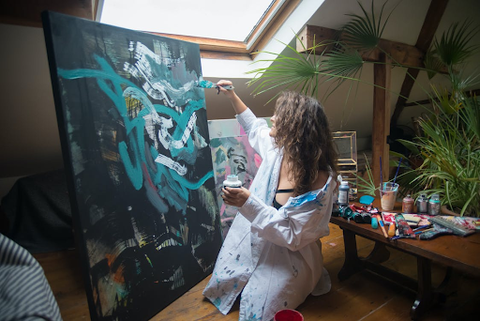Impressive Fine Art Acrylic Painting for Your Next Painting Purchase


Sometimes it's hard to know where to start when deciding which paint to use. Use the proper paint on your next project to achieve the desired result. In addition to varying greatly in durability, different paints can drastically alter the appearance of an object. The success of your creation may hinge on your choice of paint, depending on the medium you're using.
Acrylic paints may be used in various ways, including delicate brush strokes, glazing, staining, and water media methods. The pigment quality, color strength, and longevity of this paint are all exceptional despite its smooth and lightweight consistency. Any sturdy surface, such as watercolor paper or canvas, may be painted using acrylic paint. It dries rapidly and comes in many packaging options, such as a tube or a little ink bottle.
Process of Creating an Acrylic Painting

The following is a step-by-step approach for acrylic painting, and while there is considerable leeway for customization, it should typically be followed. As was said before, this is because acrylic paints are less forgiving and easy to repair than other media, they can result in a professional quality paint, or they can manage your expectations.
Put Together Your Art WorkSpace
Learn Your Tools and Practice With Them
Prepare a Conceptual Drawing or Painting for Your Work
Ignite the Brush!
Characteristics of a High-Quality Acrylic Work of Art

Acrylic paint has several advantages that make it a good option for both amateurs and professionals, and I'll go over a few of them below.
- Acrylic paint is a very adaptable medium. It dissolves in water when wet, but as a plastic polymer, it dries into a water-resistant, flexible, and long-lasting surface, allowing additional coats of paint to be applied without damaging the previous ones.
- You may find acrylic paint in many packaging options, including tubes, jars, plastic push bottles, and even tiny ink vials.
- Acrylic paint may be used like watercolor when mixed with water or other materials. Too much water, though, and the acrylic paint will begin to break down and scatter, leaving small dots of color in your paint.
- Acrylic paint is an oil paint equivalent. Acrylics may be more well-known for their vibrant hues, but many colors are similar to those found in oil and may be applied in ways that render them unrecognizable from oil paints.
Advice on Making an Acrylic Painting
Having gathered the necessary materials like a palette knife, you can now begin. Create beautiful artwork for your home or business with these bits of advice:
Keep from Letting Your Palette Dry Up
Try Using Different Colors Together
Keep Your Brush Load Light
Use Inspiration
Don't Panic If You Make an Error
Reduce the Length of Drying
Order Personalized Acrylic Painting from Memorialize Art
If you are looking for a unique and thoughtful gift, or simply want to add some personality to your home décor, an acrylic painting from Memorialize Art is a perfect choice. With our easy online ordering system, you can have your custom artwork created and shipped directly to your door. So what are you waiting for? Order your personalized acrylic painting today!











